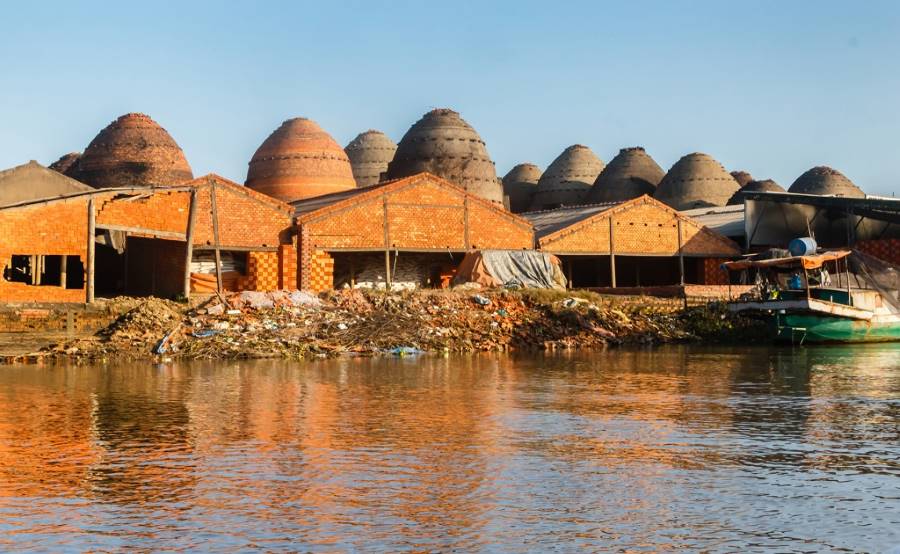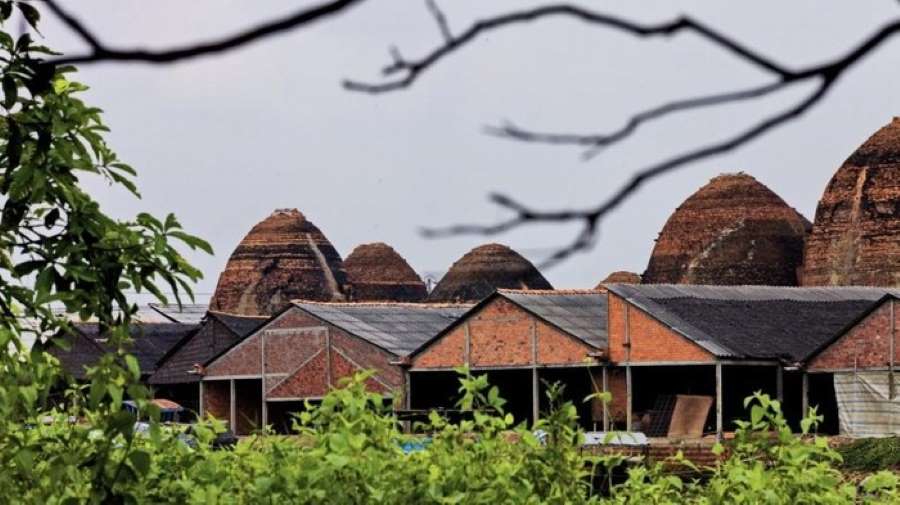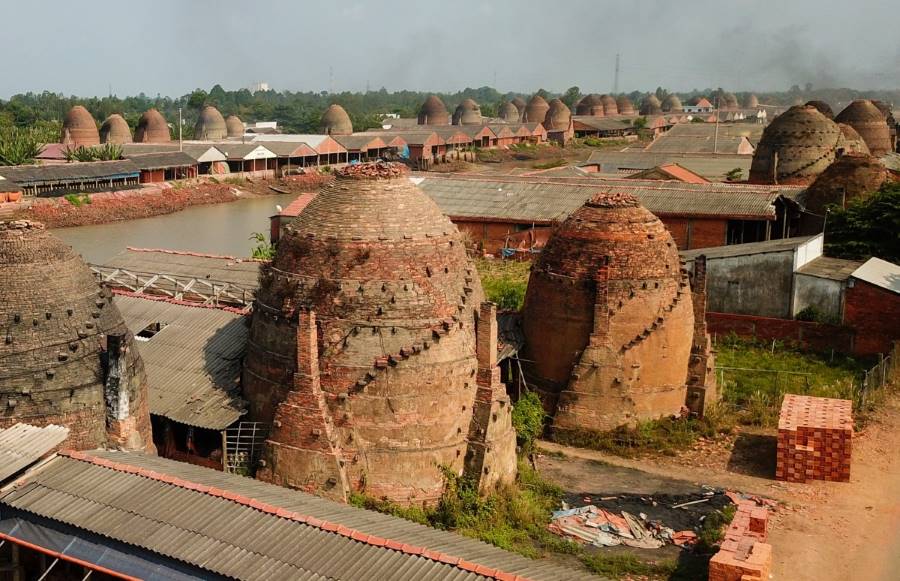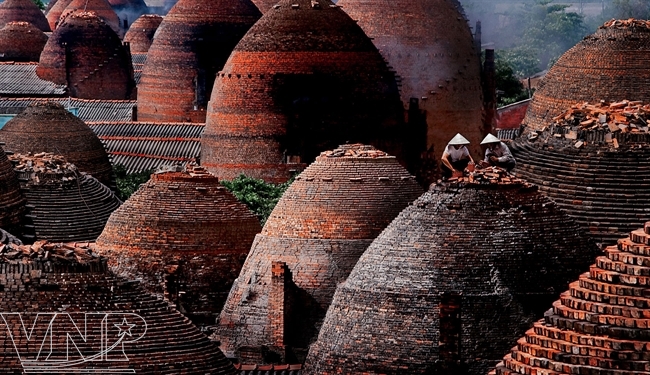Vinh Long pottery brick-burning is one of the few Mekong Delta communities that has survived and thrived to this day. Join HIEP LOI IV on this trip to Vinh Long to learn about the fascinating stories that surround this traditional craft village!
Vinh Long is one of the provinces in the Mekong Delta region, so when people think of this land, they often think of many fruit orchards next to interlaced rivers and canals. Not only that, but for hundreds of years, this area has been known for its traditional brick and pottery villages. Vinh Long pottery’s brick-burning profession has long been proud of the title “red kingdom” or “capital of brick kilns.” Learn more about Vinh Long pottery brick making in this article with HIEP LOI IV!
1. A brief overview of Vinh Long pottery brick production.
Location: along the banks of Co Chien River to Mang Thit River
Vinh Long is a clay-rich area. As a result, this location has advantages and conditions that allow people to form a profession of burning Vinh Long pottery bricks for generations. People eventually evolved into pottery from the profession of burning bricks. Vinh Long is the largest traditional handmade pottery land in the Mekong Delta.
It would be a mistake to come here solely to see the famous Vinh Long pagodas. As a result, after passing My Thuan bridge, you can follow the Co Chien river to Vinh Long pottery village. The brick and pottery kilns grow close to each other, giving the impression of a burning tower in the sun from a distance. HIEP LOI IV expects you to admire this poetic, interesting scene the first time you see it.


2. Discover the stories behind Vinh Long pottery brick production
2.1 Vinh Long pottery brick kiln was once known as the Red Kingdom.
Walking along the Co Chien River, you will notice red kilns that resemble giant mushrooms that are gradually appearing. Several decades ago, every family in the Mang Thit district had two to three kilns. People are doing well, so bricks and tiles are being baked nonstop, and many families are hiring a large number of workers. For more than a half-century, the brick-burning profession of Vinh Long pottery has been associated with the majority of the families who now live along the banks of the Co Chien or Mang Thit rivers.
According to HIEP LOI IV, the profession of burning pottery bricks first appeared in Vinh Long at the turn of the twentieth century. There have been many ups and downs and storms during the formation and development of Vinh Long’s traditional brick-burning profession. Initially, people used the abundant clay to make bricks and tiles. Long Ho could not make similar products in Mang Thit at the time. After a while, the Vinh Long pottery brick-burning profession spread to other areas. Thousands of kilns are constantly on fire. Furthermore, the number of boats transporting goods and materials into and out of the wharf is constant, encompassing the Mang Thit, Co Chien, and Thay Cai canals. However, whether it is Sa Dec or Cao Lanh, Mang Thit and Long Ho deserve to be known as the “red kingdom” of the West.
Furthermore, there was a time when Vinh Long’s land produced over 3000 kilns. This is regarded as the pinnacle of Vinh Long pottery brick production. Around 1980, many brick kiln owners began to produce higher-quality products by increasing the firing temperature. Since then, everyone has recognized and loved popular products such as jars, jars, bricks, tiles, bowls, plates, cups, and so on.


2.2 How is Vinh Long’s pottery brick firing business doing these days?
Because the value of bricks and tiles is decreasing, thousands of kilns in Vinh Long have cooled down. One of the objective reasons why manual kilns are no longer as active as they once were is likely due to pollution from smoke and dust.
People in Vinh Long pottery-burning village have carefully researched many special technical formulas, creating very natural white and silvery sloppy products up to the present time. However, the number of families who keep kilns is declining for a variety of reasons.
Vinh Long’s villages with the traditional craft of burning ceramic bricks are changing and combining many tourist facilities. According to the observations of young people who have come here to check-in, the kilns around the Mang Thit and Long Ho rivers have the advantage of years of existence and are extremely well-known, allowing them to easily design many appealing tours. You are welcome to join and explore many famous Vinh Long pottery villages along the Co Chien and Mang Thit rivers, as well as shop for unique ceramic products as gifts for everyone.


3. Some well-known brick kilns in Vinh Long
Visit the following two famous villages to learn about the largest Vinh Long pottery-burning profession in the Mekong Delta:
– Hung Loi brick kiln: This location has a plethora of new shooting locations with impressive nostalgic nuances. This is one of the villages in Vinh Long with a long history of burning ceramic bricks, attracting a large number of young people. Hung Loi brick kiln, with its attractive beauty of brick walls, deserves to be on the list of the most interesting attractions in Vinh Long that you should not miss.


– Mang Thit brick kiln is becoming more appealing and impressive in the eyes of people as images of brick kilns covered in moss and blurred dust circulate. Similar to other villages, the Mang Thit Vinh Long brick kiln inspires young people to explore and check-in.


Exploring Vinh Long’s pottery-burning villages will provide you with more useful information in addition to an impressive and unique photo album. HIEP LOI IV hopes that learning about the traditional pottery-baking craft in this land is included as one of the meaningful activities in your own travel itinerary. I wish you a memorable and enjoyable journey.
Source: Vietnam Farmers Association



